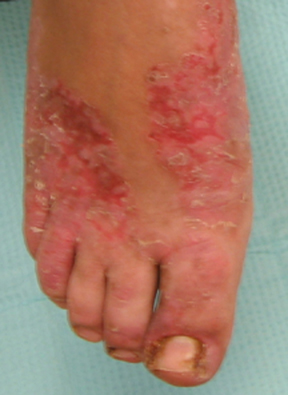Etiology
Zinc deficiency is common in developing regions due to malnutrition, while in developed regions zinc deficiency is associated with aging and many chronic diseases.
Most cases of acquired zinc deficiency arise from a combination of the following factors:
Nutritional: diet low in meat, high in phytates (found in whole grains and soy products) or oxalates (found in many vegetables including spinach, nuts, okra, and tea)
Host: presence of a chronic disease or chronic or recurrent infections
In developed countries, zinc deficiency is often only considered in people with other at-risk conditions. These include patients with malabsorption, chronic gastrointestinal and liver disease, renal disease, sickle cell disease, and HIV infection; chronic treatment with certain medication (hydrochlorothiazide, penicillamine, ethambutol, certain antibiotics), anorexia nervosa, alcohol use disorder, in people over 60 years of age, and in vegetarians and vegans.[1][2][3][4][5][6][7][8][9][10][11][12][13]
In developing countries the etiology is multifactorial owing to low intake of zinc; reduced absorption due to other foodstuffs, especially phytates and oxalates; and increased losses due to infection.[18]
Acrodermatitis enteropathica is a genetic disorder (autosomal recessive) that causes severe zinc deficiency through impaired absorption.[17]
Pathophysiology
Zinc is essential for the function of more than 300 different enzymes and transcription factors. Zinc itself is also an antioxidant and may have primary anti-inflammatory properties. The exact link between zinc deficiency and the myriad related signs and symptoms is not clearly elucidated. However, it is postulated that the combined effects of zinc-related changes in multiple immune and metabolic parameters result in specific clinical features.
Acrodermatitis enteropathica leads to severe zinc deficiency, likely through a defective intestinal zinc transport protein, most commonly due to a mutation in the ZIP4 gene.[17]
Classification
Acrodermatitis enteropathica
Acrodermatitis enteropathica is an autosomal-recessive disease that causes severe zinc deficiency through impaired absorption. This disorder typically presents in infancy with crusting, vesicular dermatitis, diarrhea, impairment of growth, and infections. Acrodermatitis enteropathica is typically inherited, but may rarely be acquired. [Figure caption and citation for the preceding image starts]: Acrodermatitis enteropathica seen with severe zinc deficiencyAdapted from Maverakis E, Lynch PJ, Fazel N. Acrodermatitis enteropathica. Dermatol Online J. 2007;13:11; used with permission [Citation ends].
Acquired zinc deficiency
Acquired zinc deficiency may result from poor nutritional intake, ingestion of foods or drugs that reduce zinc absorption, chronic illness, or any combination of these. Symptoms are quite diverse and clinical suspicion for this must be high in at-risk individuals: infants with nutrient-poor diets, malabsorption syndrome, people with chronic gastrointestinal disease and liver disease, sickle cell disease, renal disease, alcoholism, HIV infection, anorexia nervosa, and in older people.[1][2][3][4][5][6][7][8][9][10][11][12][13] Other risk factors include vegetarianism or veganism.
Use of this content is subject to our disclaimer